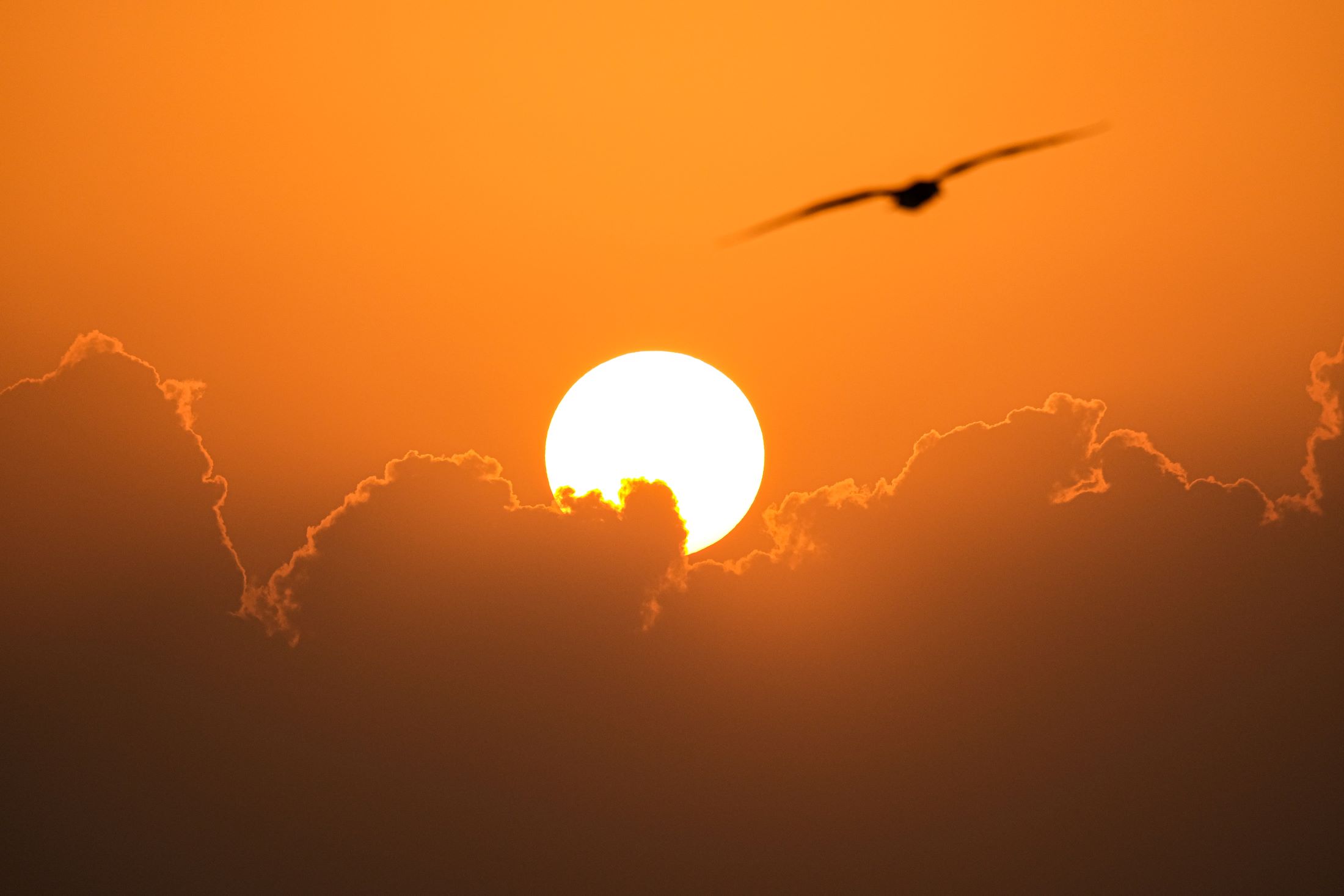Though fall has arrived, the summer heat hasn’t completely left us here in Big Bear Lake. How do birds beat the heat? And, more importantly, what can we do to optimize backyard bird feeding in the hot weather?
How Birds Handle Hot Weather
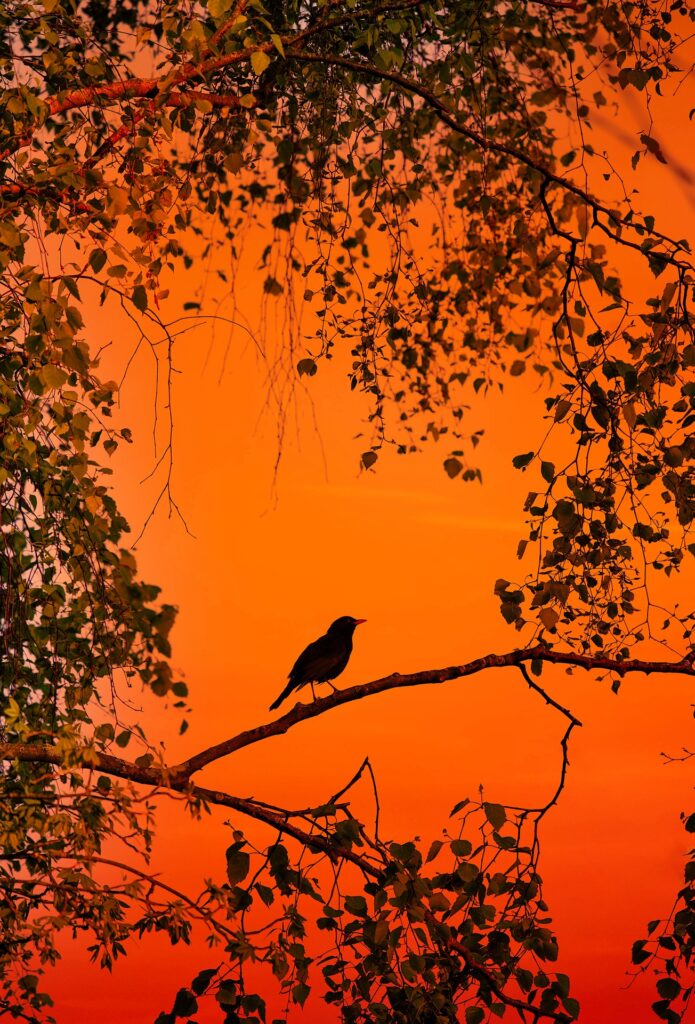
Like humans, birds respond to weather in specific ways. Birds look to stay cool in the hot summer months, which means looking for shade, shelter, and water, along with food. They typically save most of their activity for later in the day when the heat isn’t as intense. And, unlike us, they can’t perspire, but they lose water vapor through their skin and feathers, which means they need to replenish those liquids. Providing water for birds year-round—and in summer, especially—is so important. And it becomes more vital with the increasingly warm temperatures we’re experiencing!
Bird Feeding Tips for Hot Weather
Put Bird Feeders in the Shade
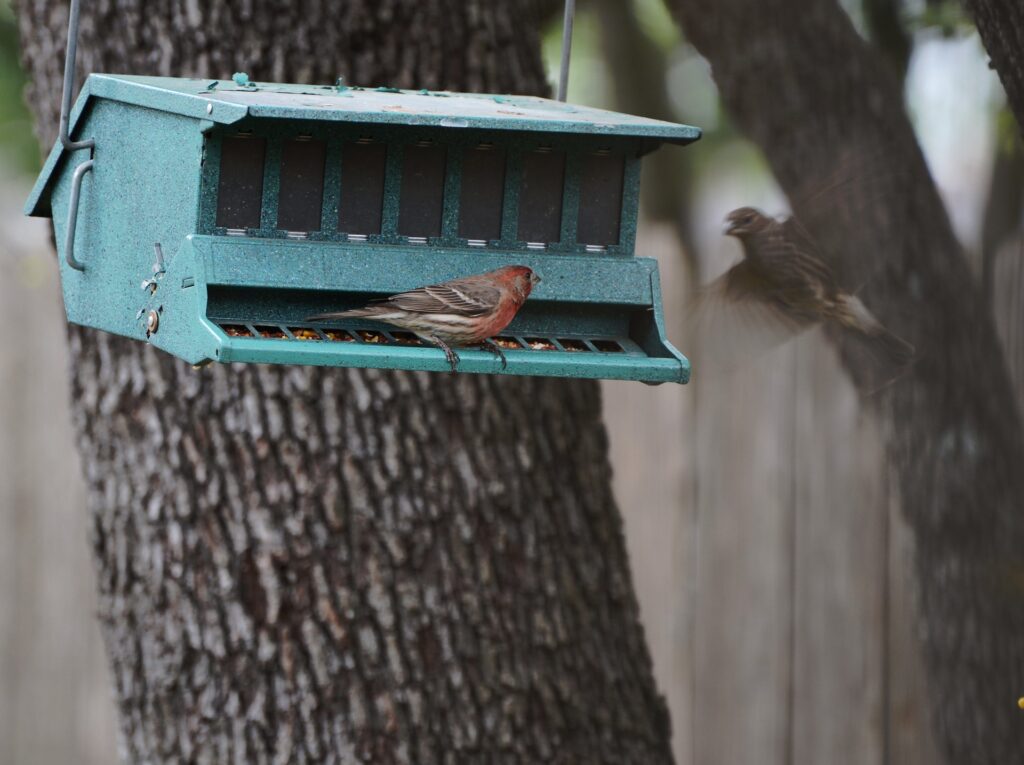
If they’re not already there, move your bird feeders to a shady locale, like under your eaves, near a bush, or on a tree branch. Not only will this give hungry birds a place to cool down and feed, but it will keep your bird seed dry from those summer showers and monsoons. If possible, try placing your bird feeders near trees or plants in your backyard, as these are natural shelters that birds seek out away from the sun. Bird feeders with roofs have the same cooling effect on birds, while also keeping bird seed protected from the elements.
Keep Seeds Dry and Bird Feeders Clean
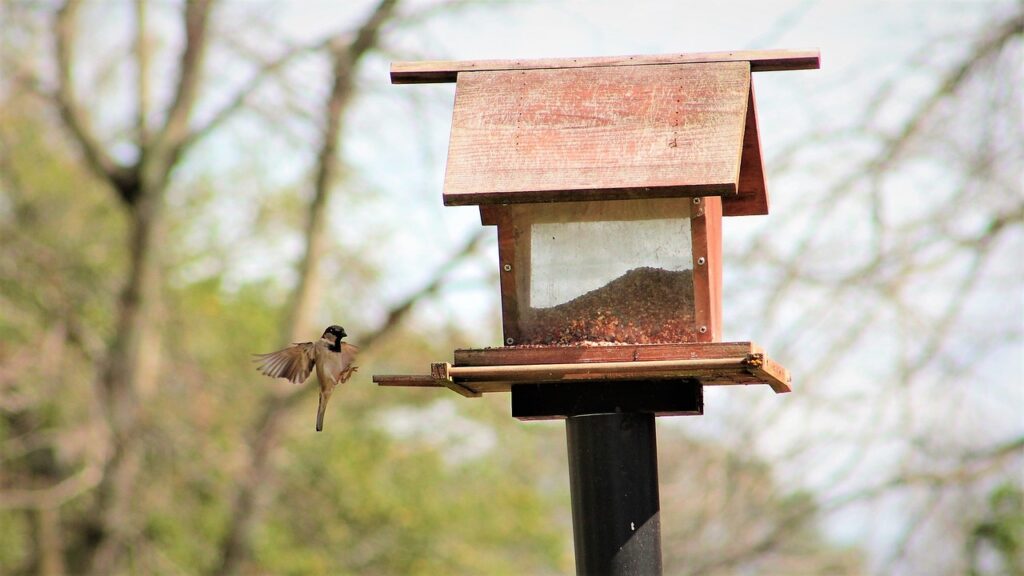
Prevent mold from forming from hot, humid weather by regularly cleaning them. A good rule of thumb is to clean them before every refill—and in really hot, humid climates, it may be good to fill feeders halfway to remind you to clean them more often. It’s also wise to check your feeders for moldy seed every so often, and discard it immediately. This may occur when full feeders sit for too long in hot, sticky weather. After discarding spoiled seed, clean your feeder thoroughly and allow it to dry before refilling it with fresh bird seed.
Not sure how to clean your bird feeders, or what solutions to use (and not use)? Read our article, “Cleaning Your Bird Feeder Dos and Don’ts.”
Want to learn how to store your bird seed so it won’t spoil? Check out the Chirp article, “How to Store Your Bird Seed to Keep it Fresh.”
Offer No-Melt Suet Cakes

Suet is an excellent energy-boosting bird food year-round, and great for nesting birds and their young during the spring and summer months. But though these high-fat foods are the perfect way for birds to get the calories as they raise their young, you need to take extra care that they don’t spoil or melt in hot weather. Placing suet feeders in shady areas, and even switching them out for no-melt suet cakes, are both good solutions. Your local woodpeckers, jays, chickadees, and other suet-loving birds will thank you!
Provide Water, and Refresh Often
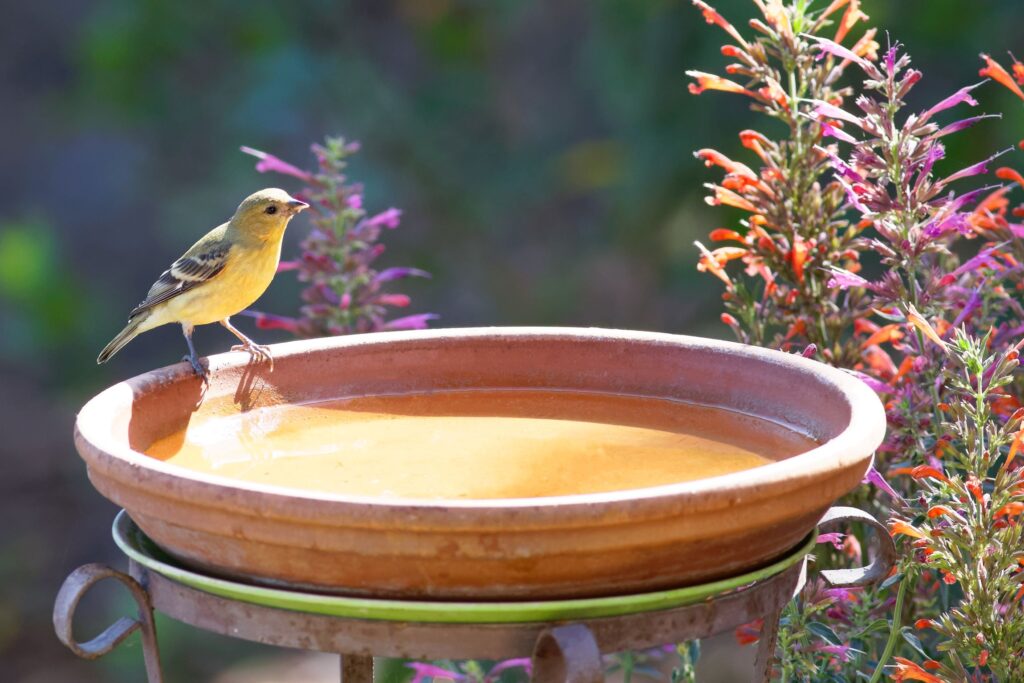
With temperatures high, birds tend to bathe and drink more water in the summer months. Lakes and ponds are natural waterholes, but you can help the birds by offering a birdbath in your yard or garden, or even on your patio or deck, if your space is limited. Place the birdbath in a shady location and add a bubbler or something that causes movement in the water to attract birds.
Fill the birdbath with 1-2” of water, shallow enough so birds can wade in easily. You can also place stones or branches in the water for easy perching spots. Discard old water and refresh with new water every few days. And make sure you clean your birdbath regularly—ideally, a couple of times a week. This will prevent the bacteria and mold that can cause bird diseases, and it also discourages mosquitos.
No bird action yet? Here are “6 Reasons Why Birds Aren’t Visiting Your Birdbath,” and what to do about it.
Prevent Window Collisions from Sun Glare
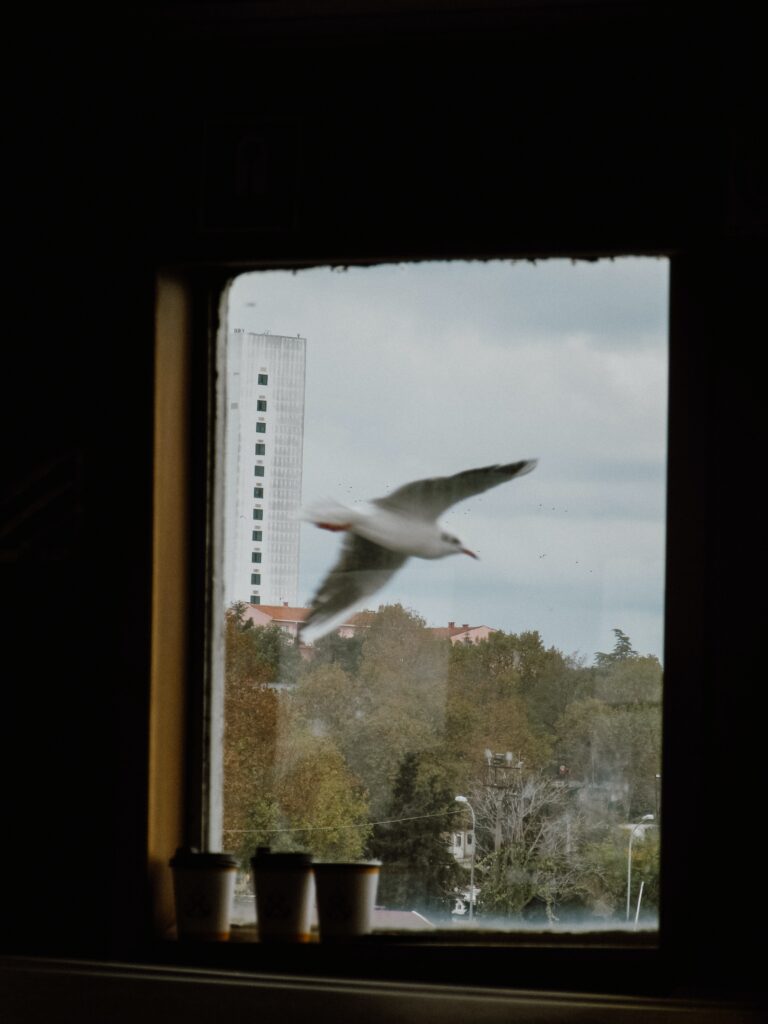
The sunny days of summer can cause problems for birds, namely window collisions caused by glare. It may sound like a small problem, but window strikes alone are responsible for as many as 1 billion bird deaths every year in this country. Birds fly into closed windows for many reasons, but often it’s because they are attracted to lights inside, or light from the sun glaring off the window. You can prevent window strikes by placing suncatchers in your window, putting decals on your windows, and turning off indoor lights when they’re not in use.
“Did a bird just fly into my open window?!” Read our article “How to Get a Trapped Wild Bird Out of the House Safely.”
Have You Heard About the Bird Cruise?
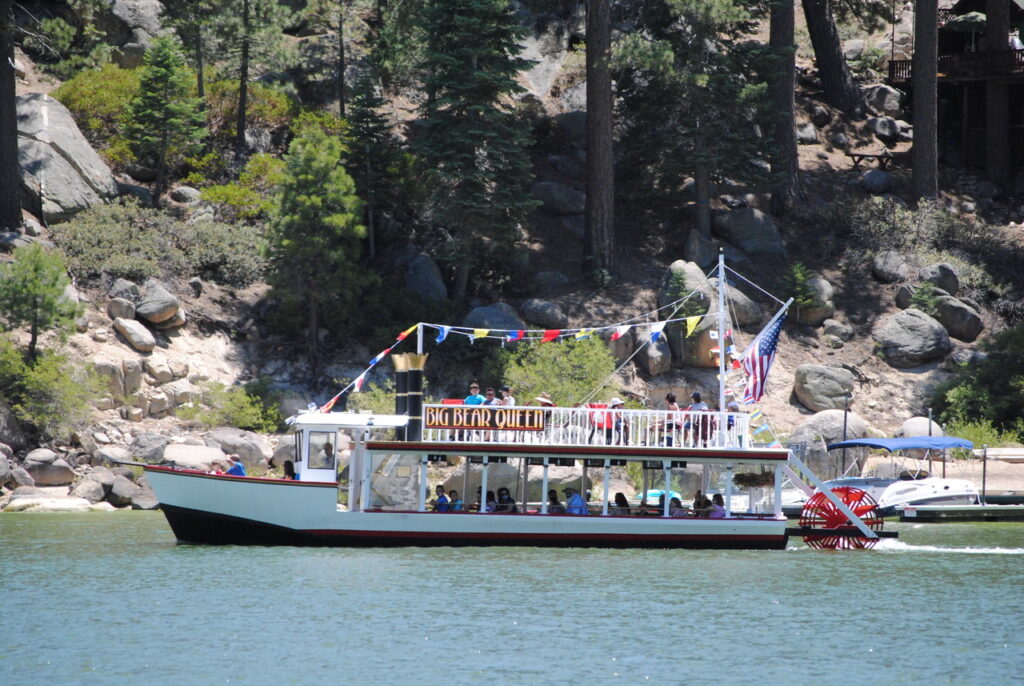
Chirp is taking birdwatching to the water this October on Chirp’s exclusive Bird Cruise around Big Bear Lake. Join birdwatchers and nature lovers and make new friends as you explore the unique birds of Big Bear Lake. Space is limited, so sign up today!
Connect with us on social!
Follow us on social for more content from our events, sales and latest store products, like our National Honey Bee Day feature.

